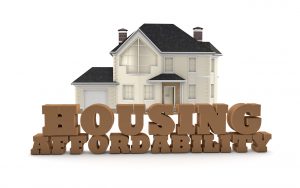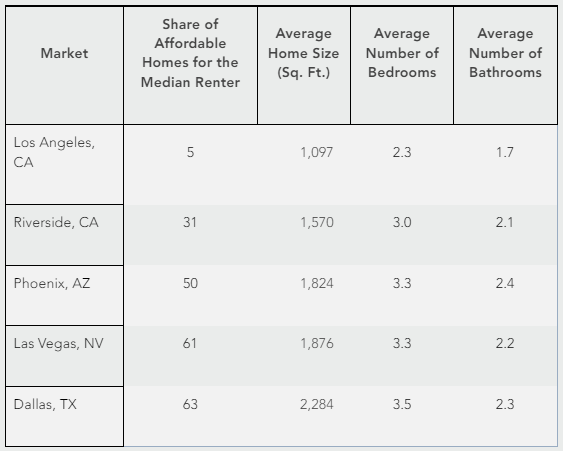 2021 was not great in terms of affordability. As the median house price rose to $358,000 last year, affordability decreased in broad strokes across the country. While this was true of most major markets, there yet exist enclaves where affordability is much higher for first-time buyers.
2021 was not great in terms of affordability. As the median house price rose to $358,000 last year, affordability decreased in broad strokes across the country. While this was true of most major markets, there yet exist enclaves where affordability is much higher for first-time buyers.
According to First American Economist Ksenia Potapov, affordability for a potential first-time home buyer can be defined as the share of homes for sale that are within the median renter’s house-buying power. The amount of house-buying power that a renter has relative to nominal house prices in any market greatly influences the supply of homes they can afford.
The widescale adaptation of remote work during the onset of the pandemic has been one answer to affordability problems. The wonders of modern-day technology have allowed vast sums of people to work anytime and anywhere, no matter the time zone. And these people are more apt to move away from crowded (and virus prone) city centers and into the suburbs and beyond, seeking lower mortgage payments, larger housing, and a slower pace of life.

“As millennials continue to age into their prime home-buying years and the opportunity to work remotely becomes more common, it may be time to update the age-old real estate adage to location, location, relocation,” Potapov said.
While remote work likely peaked during the onset of the pandemic, research from the National Bureau of Economic Research, predicts that about 20% of all full-time jobs going forward will go fully remote and likely never return to the office.
For example, take a Los Angeles, California resident who makes $59,000 annually and rents their property. At this income level, they would have house-buying power of $406,000 meaning they could only afford 5% of the available listed home in the Los Angeles area.
Now, if that same LA renter moves to Dallas, Texas with the same income, they could afford 63% of the listed homes, much above the 5% they could back in California.

“For potential first-time home buyers, leveraging their house-buying power in more affordable markets can also help them buy more attractive homes—more square footage and rooms, more options for different home styles and neighborhood amenities—increasing the opportunity to find a home that suits their preferences” Potapov said.
Also, people that were looking for something specific in a home usually don’t settle either; they are more apt to move to a place and build what the want now that the typical home is also an office, gym, and daycare center.
“In the coming years, many workers may leverage their ability to work remotely and their house-buying power to become homeowners in more affordable markets,” Potapov concluded.

 DSNews The homepage of the servicing industry
DSNews The homepage of the servicing industry









